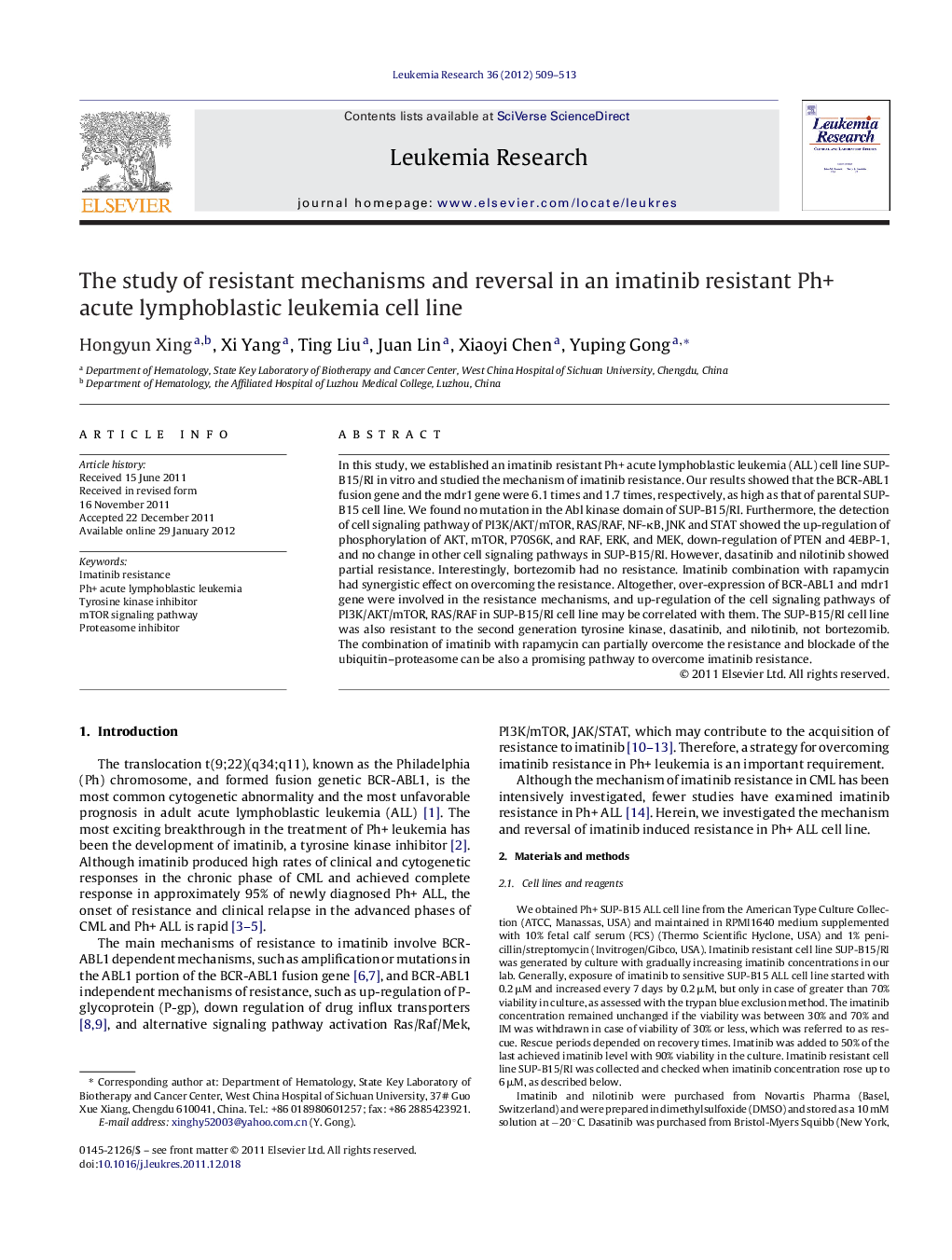| Article ID | Journal | Published Year | Pages | File Type |
|---|---|---|---|---|
| 2137514 | Leukemia Research | 2012 | 5 Pages |
In this study, we established an imatinib resistant Ph+ acute lymphoblastic leukemia (ALL) cell line SUP-B15/RI in vitro and studied the mechanism of imatinib resistance. Our results showed that the BCR-ABL1 fusion gene and the mdr1 gene were 6.1 times and 1.7 times, respectively, as high as that of parental SUP-B15 cell line. We found no mutation in the Abl kinase domain of SUP-B15/RI. Furthermore, the detection of cell signaling pathway of PI3K/AKT/mTOR, RAS/RAF, NF-κB, JNK and STAT showed the up-regulation of phosphorylation of AKT, mTOR, P70S6K, and RAF, ERK, and MEK, down-regulation of PTEN and 4EBP-1, and no change in other cell signaling pathways in SUP-B15/RI. However, dasatinib and nilotinib showed partial resistance. Interestingly, bortezomib had no resistance. Imatinib combination with rapamycin had synergistic effect on overcoming the resistance. Altogether, over-expression of BCR-ABL1 and mdr1 gene were involved in the resistance mechanisms, and up-regulation of the cell signaling pathways of PI3K/AKT/mTOR, RAS/RAF in SUP-B15/RI cell line may be correlated with them. The SUP-B15/RI cell line was also resistant to the second generation tyrosine kinase, dasatinib, and nilotinib, not bortezomib. The combination of imatinib with rapamycin can partially overcome the resistance and blockade of the ubiquitin–proteasome can be also a promising pathway to overcome imatinib resistance.
